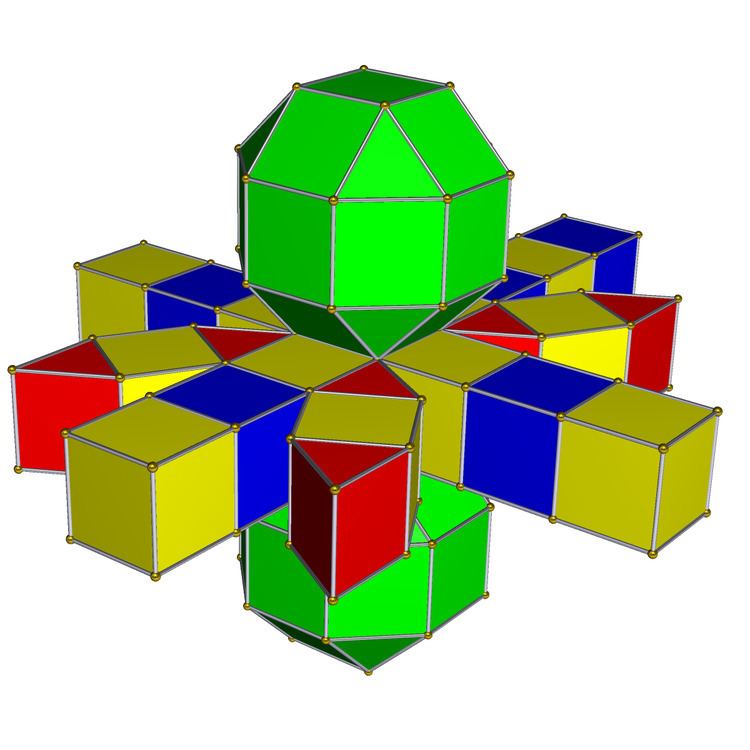 | ||
In geometry, a rhombicuboctahedral prism is a convex uniform polychoron (four-dimensional polytope).
Contents
It is one of 18 convex uniform polyhedral prisms created by using uniform prisms to connect pairs of Platonic solids or Archimedean solids in parallel hyperplanes.
Alternative names
Runcic snub cubic hosochoron
A related polychoron is the runcic snub cubic hosochoron, or parabidiminished rectified tesseract or truncated tetrahedral cupoliprism, s3{2,4,3}, , from 2 truncated tetrahedra, 6 tetrahedra, and 8 triangular cupolae in the gaps, for a total of 16 cells, 52 faces, 60 edges, and 24 vertices. It is vertex-transitive, and equilateral, but not uniform, due to the cupolae. It has symmetry [2+,4,3], order 48.
It is related to the 16-cell in its s{2,4,3}, construction.
It can also be seen as a prismatic polytope with two parallel truncated tetrahedra in dual positions, as seen in the Compound of two truncated tetrahedra. Triangular cupola connect the triangle and hexagonal faces, and the tetrahedral connect edge-wise between.
